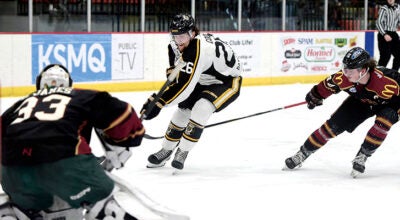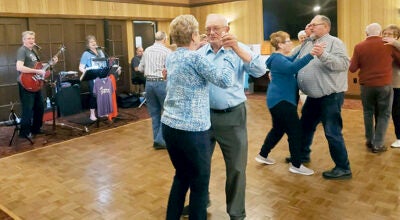Heat makes Upper Midwest long for return of winter
Published 10:10 am Thursday, July 21, 2011
MINNEAPOLIS (AP) — In the land of giant ice castles, where automakers test their vehicles against bitter cold and people play hockey year-round, it’s not uncommon to hear complaints about the weather.
The Upper Midwest is accustomed to extreme temperatures, just not those listed at the top of thermometer.
Parts of the region are suffering through the worst heat wave in more than a decade, leaving families who eagerly await a too-short summer longing for December weather. The heat index topped 119 degrees Tuesday in Minneapolis. And it felt like 105 degrees in Madison, Wis.
At the Minnesota Zoo, known for displaying northern-latitude animals such as caribou, musk oxen and moose, workers say the heat makes some creatures crabby.
They’ve been keeping animals cool with extra water and fans. The thick-furred tigers are happy with frozen “bloodsicles.”
“It’s kind of gross, but they like it,” said Diana Weinhardt, who supervises the exhibit. She spent 15 years at the zoo in Houston and said this week’s heat was rough even on her.
“This is very, very Texas-esque weather, and it’s hard, especially if you’re not used to it. In Texas, we all kind of grew hardened to it, but here — ugh.”
The hot air mass that has plagued the Plains for days began spreading eastward Thursday, roasting residents of several more states under a sizzling sun.
Highs of 101 were predicted in Toledo, Ohio — just 2 degrees above a record set in 1930. Combined with the humidity, it could feel as hot as 115 across Ohio.
The triple-digit temperatures were expected to extend into Philadelphia and much of central and western New York, all of which were under excessive heat warnings.
Although this week’s heat wave has not been blamed for widespread fatalities, the weather is suspected of contributing to a number of scattered deaths, including that of an Oklahoma man who was found in a field near Gravette hours after he was released from jail.
Back in Minneapolis, some employees of the Olsen Fish Co. — which bills itself as the world’s largest producer of the Scandinavian delicacy lutefisk — have refused to go outside on break. Instead, they’re hanging out in the 44-degree room where pickled herring is processed, company President Chris Dorff said.
When they do venture outside, they get plenty of space on the commuter train home because “when you work in a herring and lutefisk facility, you have this, this odor,” Dorff said.
Lutefisk is dried cod soaked in lye, rinsed and boiled. Mix those scents with a little sun and sweat, and “we all leave a little more odiferous, that’s for sure,” he said.
At Bachman’s Floral Gifts and Gardens, generations of employees have worked to protect the company’s plants from the winter, but this week they’re trying to keep the Christmas crop of poinsettias from baking. Their greenhouses south of Minneapolis run 10 to 15 degrees warmer than the outside air, and the heat has threatened to wilt both workers and the young plants trying to grow roots.
“They are just trying to survive, I guess, like we are,” said Jack Geyan, Bachman’s production manager who says the heat is making him nostalgic for winter.
“Some guys in the nursery asked me if I would rather have 30 below or this temperature. And I said, ‘Well, 30 below is a little cold, but maybe 20 below.'”
University of Minnesota meteorologist Mark Seeley said the number of days with temperatures in the upper 90s or 100s hasn’t really increased, but the number of days with soaring humidity have spiked.
“We have had far more dew point-driven heat waves in recent decades than any time in the past,” he said.
It’s been at least 12 years since Minnesota has seen heat indexes like the ones recorded this week, day after day.
The brutal heat in Wisconsin forced Josh Martinez, operations manager of All-State Roofing in Madison, to pull in his crews this week.
“It’s a whole lot better and safer for us just to not do a job,” he said.
In Minnesota, where hockey players use indoor rinks after the lakes thaw, one rink struggling to keep its ice intact fired up extra cooling equipment for the first time in a decade. The expected cost: a $10,000 spike in this month’s utility bill.
“There’s equipment that we haven’t run in 10 years,” said Andy Baltgalvis, manager of the Bloomington Ice Garden south of Minneapolis. “We actually turned it on, just so we could stay ahead of the heat.”




